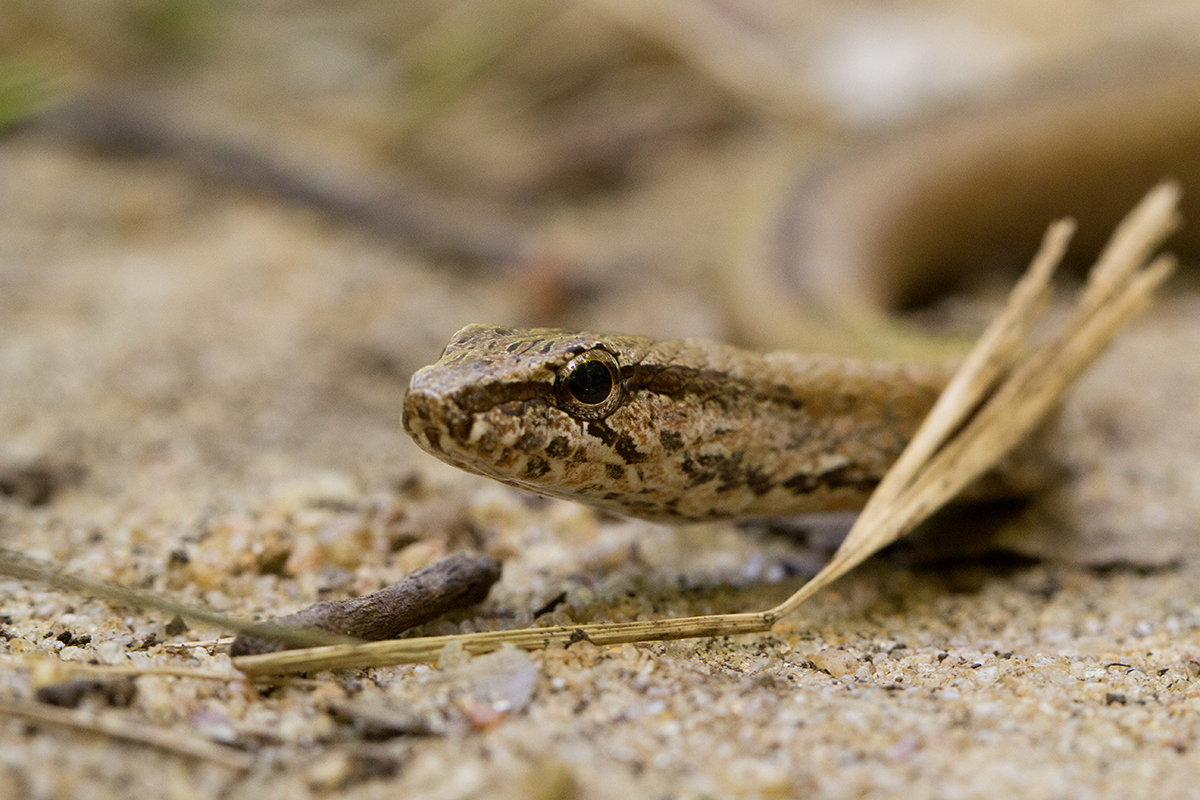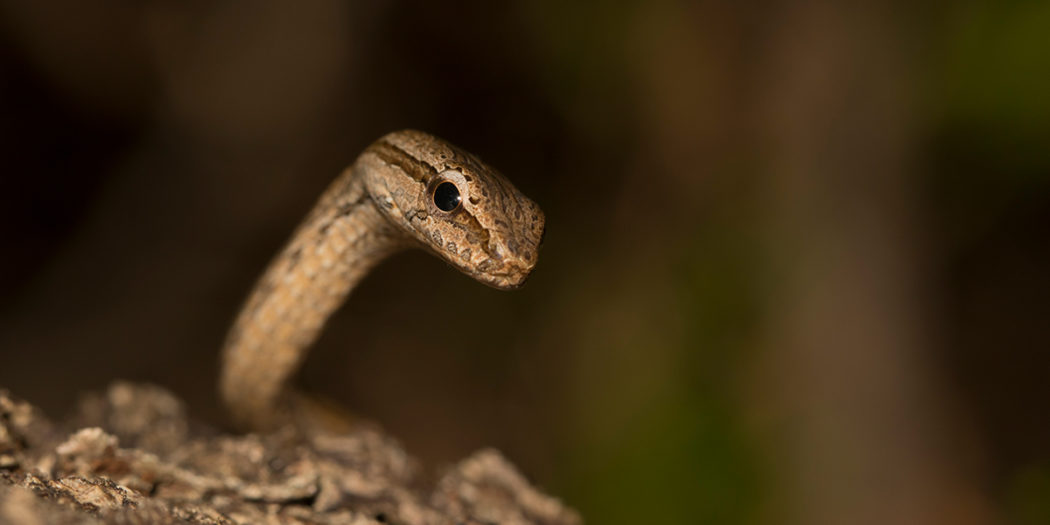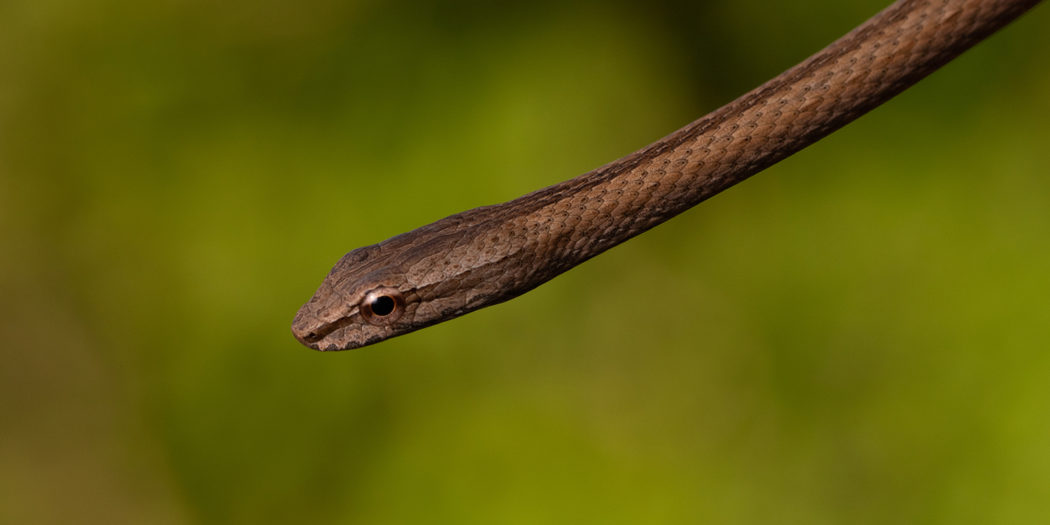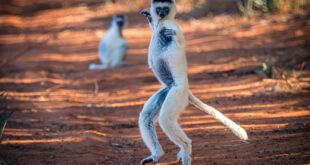For a long time, there was only one Common Big-Eyed Snake on Madagascar – or so we all thought. In 2017, researchers from the USA discovered that there is a second species of Common Big-Eyed Snake in Madagascar. For centuries, the species had been hidden, even though it lived so obviously in plain sight. Accordingly, the newly discovered species was named Mimophis occultus, from the Latin occultus for secret or hidden.
Similar to its sister species, the “real” Common Big-Eyed Snake Mimophis mahfalensis, Mimophis occultus is not very choosy about its habitat. It is found in large numbers in the west and north of Madagascar, in dry forests as well as in secondary vegetation, on the roadside next to rice fields, and in villages. In the national parks of Ankarafantsika and Ankarana, it is a frequently sighted reptile that can be easily observed because of its relatively short escape distance. But it is also found in the vicinity of large towns such as Antsiranana (French Diego Suarez) and Ambanja. Only high altitudes above 700 m are not inhabited by Mimophis occultus, in contrast to its sister species.

The Hidden Big-Eyed Snake feeds mainly on small reptiles such as leaf chameleons, young Madagascar iguanas, or geckos. Frogs are also high on the menu. To overpower its prey, Mimophis occultus uses its small poisonous teeth, which are located far back in its jaws. The poison is harmless to humans, especially as Hidden Big-Eyed Snakes are – for humans – very sociable.
Incidentally, the two sister species are visually very easy to distinguish from each other: In Mimophis mahfalensis the dark line behind the eye extends only a few scales, in Mimophis occultus the line extends much further or even merges into the body markings. In addition, the hitherto hidden species has a slightly longer tail, regardless of sex.
 MADAMAGAZINE Your Magazine about Madagascar
MADAMAGAZINE Your Magazine about Madagascar






